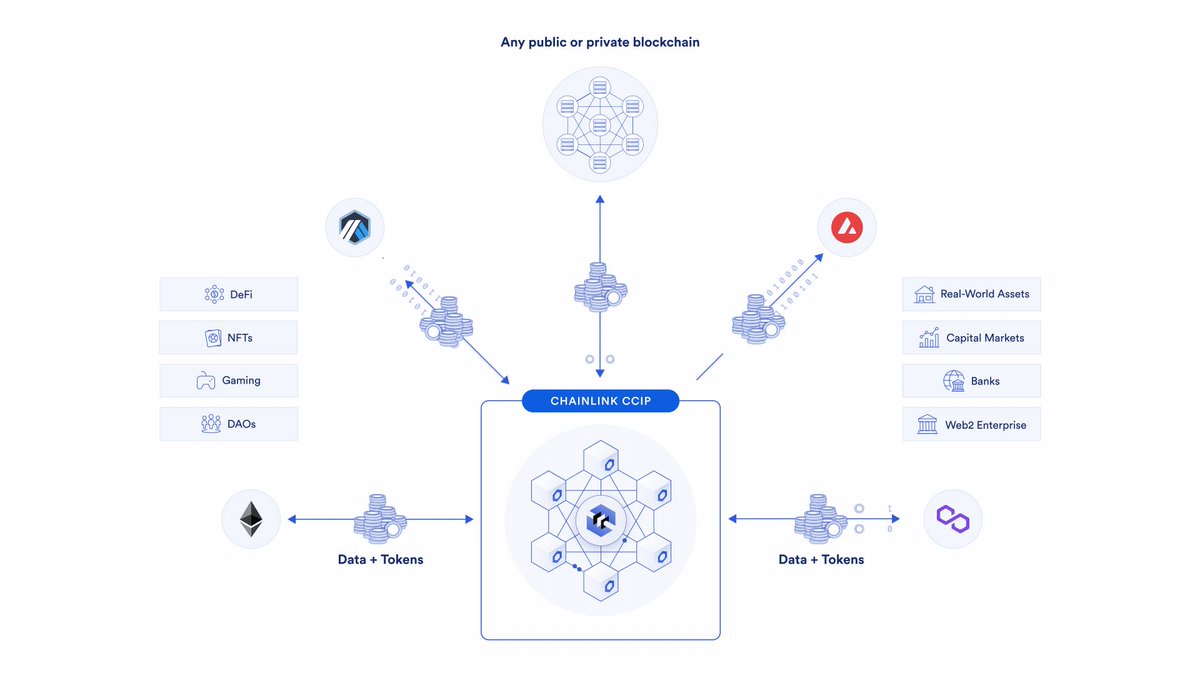ENS — A Conversation With The Founder Of NameSpace
Domain Names as Assets, Identities and Utilities

In the rapidly evolving digital frontier, the Ethereum Name Service (ENS) stands out as a beacon of innovation, reshaping the foundation of online identity and domain management. To unpack its implications we converse with the founder of Namespace to catalogue its progression, and the transformative potential of ENS. This conversation provides an examination of ENS’ metamorphosis from digital asset to indispensable tools in the Web3 ecosystem, as well as insights into the broader implications for the future of decentralized domains.
What was the initial inspiration behind creating Namespace?
We saw ENS names as assets that were waiting to be priced in. As such, they were simply sitting in users’ wallets without any way to make an income for their owners, regardless of how good they might be. Their trading was based on the speculative future value of .eth becoming a global standard for all decentralized websites that would eventually natively resolve in all browsers. Therefore, with the introduction of NameWrapper, which would allow all subnames to be independent NFTs from their parent name, we saw an opportunity for these amazing ENS names to issue (mint, sell, rent) subnames and profit from it. That was the initial inspiration that kickstarted the journey but it ended up being so much more!
How do you explain the significance of decentralized domain names to someone unfamiliar with the technology?
ENS names are way past being a decentralized domain name only. Although it is correct that the domain space is very important, it’s the only one. ENS names are your Web3 identity that you take with you anywhere you go in the world of Web3. But their primary function is to map your 0xA4k5…19KP3 address to a human-readable name like alice.eth. And the decentralized domain names with regard to decentralized websites are important because they embody the inherent values of blockchain tech: decentralized, permissionless, and censorship-resistant.
Beyond the functions you originally envisioned for ENS, what surprising use cases have emerged over the years?
Beyond the primary vision for ENS, several unexpected yet fascinating use cases have surfaced over the years. ENS names have emerged as exclusive passes into elite and private spaces and communities, including the 999 club, 10k club, and other token-gated communities. The same goes for PFP communities such as ENS Maxis, frENS, .earth and so on. The innovation didn’t stop there; in the realm of subname management, we’ve witnessed over 3M subnames issues by Coinbase (cb.id) using ENS protocol. And speaking of subnames, we have the introduction of unruggable, rentable, or forever subnames AND offchain gasless subnames that behave exactly the same as any other regular ENS names and subnames but are located offchain and don’t cost anything to mint.
Then we have decentralized websites, resistant to both rugging and censorship, now built on this platform, embodying the very ethos of blockchain technology. For both communities and individuals, name and subname management has never been more streamlined, offering a chance for customization and personal touch. One of the standout features has been the use of expiring subnames, serving as access codes or membership subscriptions. ENS has also evolved into an integral component for peer-to-peer onchain communication protocols, as well as a foundation for fully encrypted email service providers.
As a member of the DAO, and a Delegate, what major challenges haven been faced. Plus what steps are being taken to ensure the system remains secure and resistant to potential abuses?
ENS protocol is governed by the ENS DAO. And ENS root key is controlled by the 7 influential and reputable individuals from the blockchain space. Karpatkey recently published a Dune Dashboard summarising ENS governance activity which contains very interesting stats and metrics that demonstrate the strength and level of decentralization for ENS DAO. The right person to speak to about governance-related activities would be people who are actively involved in that aspect of the DAO such as members of the Metagovernance Working Group.
With the proliferation of various ENS services, how do you differentiate your platform from others? What makes it unique?
We are focused on the product build (UX/UI) quality first and foremost. As far as features go, we offer the ability for ENS name owners to customize the selling price for all subnames based on the length and charge differently for those. We offer a wide range of whitelisting abilities for communities. The ability for owners to reserve certain subnames from being minted by the public. The ability for everyone to register their web3 identity off of names or subnames. Right now we are working on composability and making our platform easily accessible to other developers, companies, and brands.
How do you see the pricing model evolving as the demand for shorter domain names increases?
When we talk about ENS name prices, the pricing model is defined by the DAO and there are no current reasons or incentives to be changed. As far as I know. There is an ongoing initiative to launch 1-character ENS names:
And when we talk about Namespace, our pricing model is based on the minting and trading fees that occur on our platform.
In your view, what is the next big evolution for decentralized domains?
For them to natively resolve in browsers. When you type thecap.eth it only shows a search result for thecap, but if they were to natively resolve in browsers thecap.eth would open a page that is now only accessible if you append .limo at the end so it looks like this: thecap.eth.limo. And scaling all .eth names past L1 and into L2 ecosystems so that anyone can mint them and manage them for much lower gas fees and get the benefits of sufficient decentralization that is inherited from L2s.
How do you see the interplay between decentralized and traditional domains playing out in the long run?
ENS currently can work (and works) as an extension of DNS. Therefore, all DNS names can (via ENS) become web3 identities and wallets. The next step is for .eth names to be included in traditional domain name registrars &DNS managers to make it easy for their users to import their existing DNS names into ENS.
What role do you envision decentralized domains playing in the broader landscape of web3 applications and decentralized web?
They are a core piece of the identity puzzle. And that is a much bigger topic of discussion. Because Identity is connected to your onchain activity and behaviour. Measured by your onchain reputation score with things such as Gitcoin passport. Attestation services and so on. You cannot have an ID without a name and ENS is a de facto naming system of web3 at the moment. And IDs spread across many different industries like defi, gaming, CEXes, etc.
How do you balance the drive towards decentralization with ensuring user-friendly experiences, especially for non-tech-savvy individuals?
Not sure how to answer this. Just building, testing, and iterating I guess. :) We definitely need more Web2 people joining Web3 especially to start businesses and bring all the knowledge in launching startup to the web3 space.
How do you view the current regulatory environment for decentralized domains, and how do you foresee it impacting the evolution of the ecosystem?
ENS names are EIP 1155 NFTs but there are no regulatory framework for now nor the mental model on how to think about these. I know many people from our ecosystem have been talking about this topic but I’m the furthest from an expert in law and regulation as one can be so I’m not the right person for this question.
Decentralized domain names are becoming a way to create and assert digital identity. How do you envision the competition and collaboration dynamics among the different blockchain ecosystems in this space?
Currently, there is no competitor to ENS that embodies the decentralized ethos as well. That has as strong community support as ENS. That has as strong an ecosystem of projects building on top of it. That has as sophisticated a DAO as ENS does. I can go on and on.
There are others like Unstoppable domains that have their own thing going on. There’s a Lens protocol with .lens names. Then there’s .btc for Bitcoiners and many other smaller ones. Also, there are other naming services that have forked ENS and are working fine I guess but have nowhere near as good partners and integrations as ENS.
Given the recent launch of CCIP by Chainlink it’s only a matter of time before all ENS names become cross-chain compatible even though they are right now when it comes to address resolution. ENS already integrated pretty much all other blockchains into it.
But my prediction is that someone will come & create an API system that will unify the majority and most of these naming system providers so that whenever someone wants to implement a naming system that supports every DID out there, can do it from one place & get all decentralized names/domains. Maybe us. 🤷♂️👀
With the potential for decentralized domains to be used as online stores, service portals, and more, do you foresee a saturation point? Or do you think the applications are as limitless as the traditional web?
Beyond limitless. There are around 200M websites and only 3M ENS names issued and only about 20k decentralized websites built so far with .eth domains. Domains only serve one purpose. But ENS names serve many!
Thanks to thecap.eth and namespace for their perspective. This article is for informational purposes only and does not constitute financial or investment advice. Please do your own research before making any investment decisions.
Website: https://namespace.ninja/
Twitter: https://twitter.com/namespace_eth
Papa is an artist, musician and writer.
Connect
Farcaster @papa — https://www.discove.xyz/@papa
Lens @papajams — https://lenster.xyz/u/papajams
Twitter @papajimjams — https://twitter.com/papajimjams






 11
11

